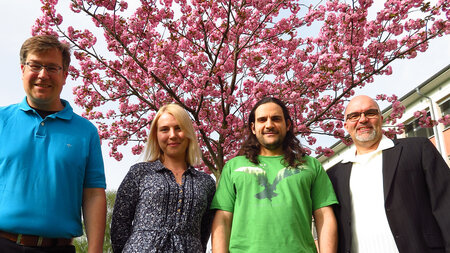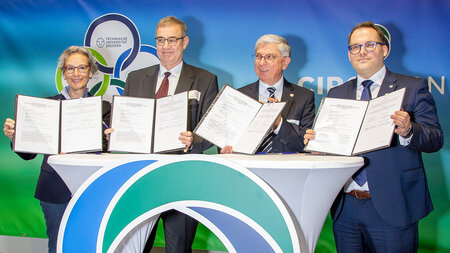100 Years of Women Studying in Chemnitz
Where just three women began, today more than 5,089 women are enrolled - various grants and promotions have helped to increase the representation of women at the TU Chemnitz
-
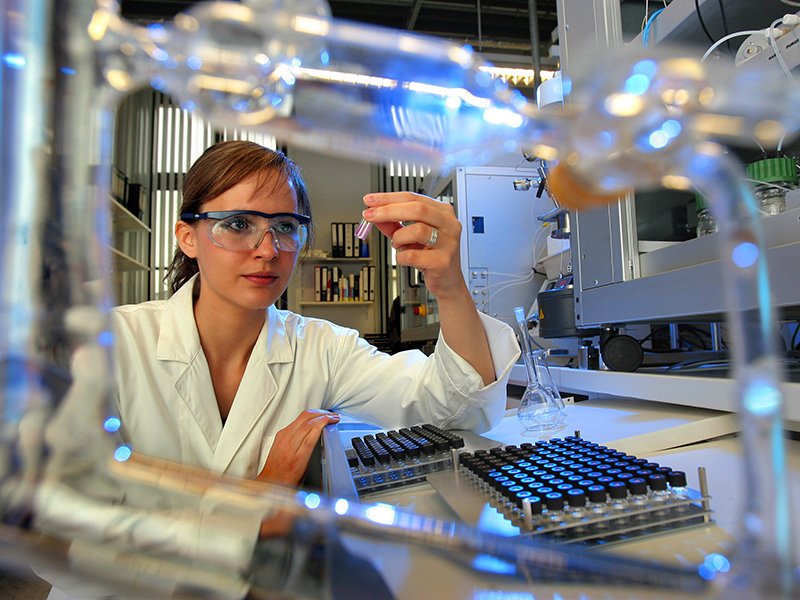
At the Technische Universität Chemnitz, the “chemistry” is also right for women. Photo source: Press office image archive/Wolfgang Thieme -
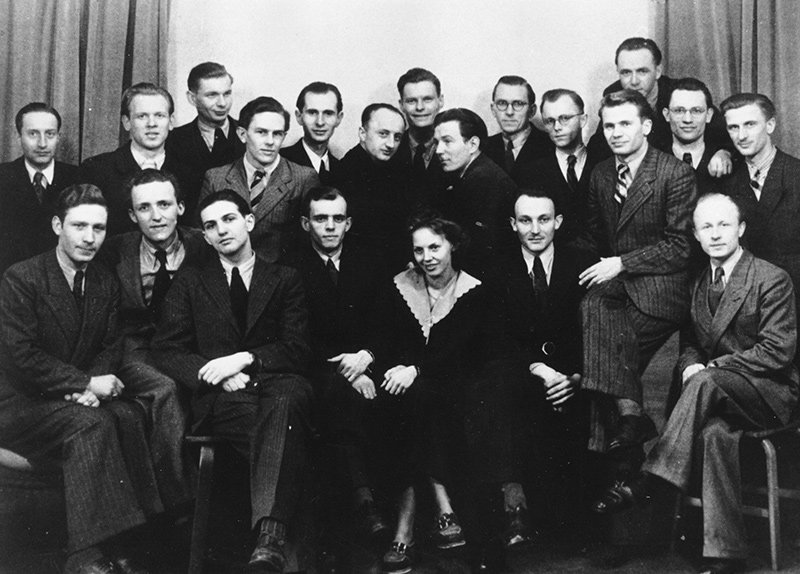
Ilse Bauer is shown here among the graduates of the first semester at the Ingenieruschule für Elektrotechnik, and was the first woman to complete a degree in electrical engineering in February 1950. Photo source: University archive -
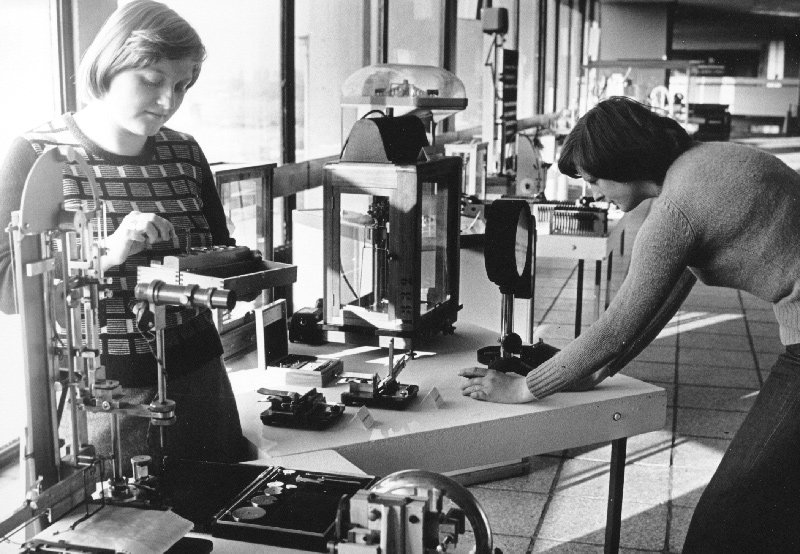
Women studying in the GDR: promotional plans saw to it that the representation of women at the university noticeably increased. Photo source: University archive -
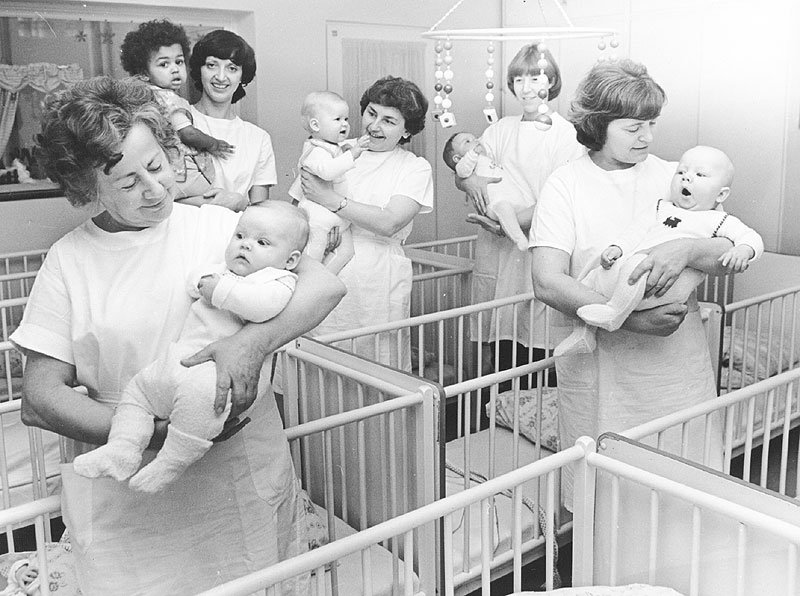
Beginning in 1971, 64 nursery school and 144 kindergarten places were made available at the “Kinderkombination Reichenhainer Straße” daycare center. This facility is still open today under the names “Krabbelkäfer” and “Zwergenland” and continues to make studying with a child a possibility. This was also the first university kindergarten in the GDR. This photo shows the infant room. Photo: University archive/Hans Schröder -
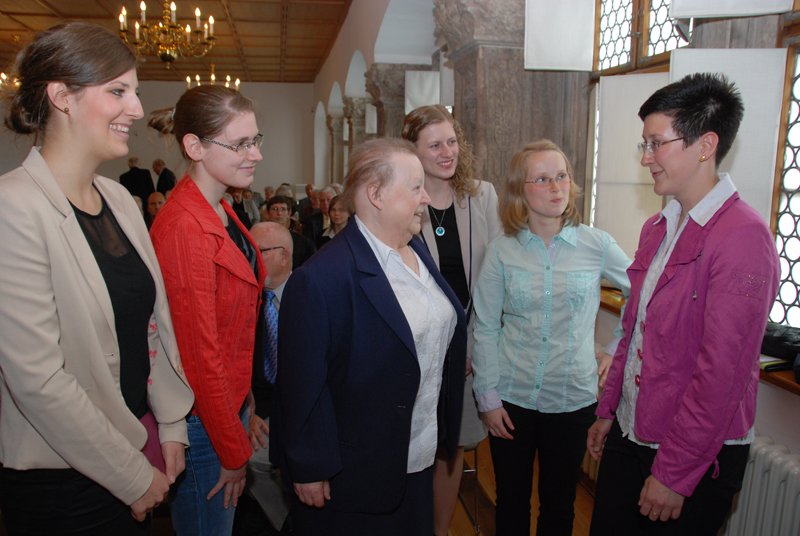
Dr. Eleonore Dießner (third from left), one of the first women enrolled at the newly established Hochschule für Maschinenbau Karl-Marx-Stadt in 1953 and the third woman to complete her PhD at the university in 1969, returned to the university on May 28, 2013 to attend the presentation of the prize named in her honor in Chemnitz’s Schloßbergmuseum. Here she can be seen in conversation with the award winner. (l.) Carolin Petzoldt, Kim Schmidt, Maria Feifarek, Franziska Nestler und Julia Richter. Photo: Press office image archive/Mario Steinebach -
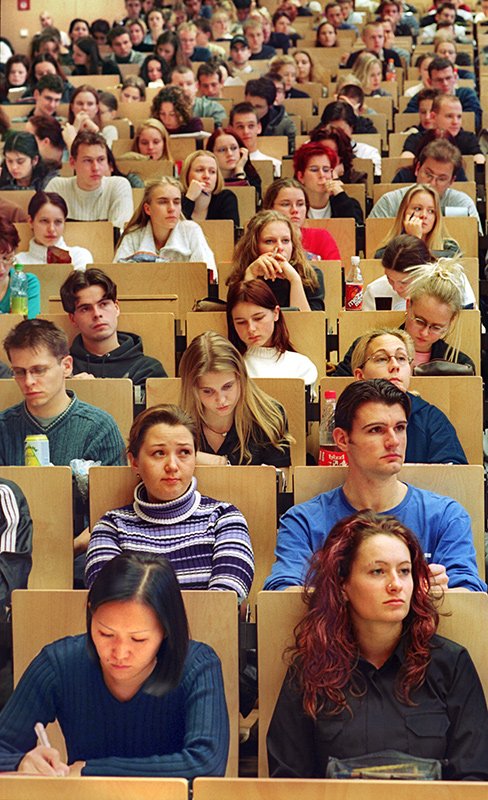
Today, women in the lecture hall are a matter of course. Photo: Press office image archive/Wolfgang Thieme
Today it goes without saying that women study at universities, complete bachelor’s or master’s degrees, earn doctorates or even lead professorships. However, a glance back in Germany’s history tells us that women were first admitted to universities in the 19th century, in Chemnitz even later. Tens of thousands of female students have studied in Chemnitz to date. To make this possible, many obstacles were dismantled along the way and many supports were put into place.
The first three female students were accepted here on April 10, 1916, at what was then known as the chemistry department of the Königliche Gewerbeakademie: 21-year-old Luise Hoffman, 17-year-old Ilse Knoll and 20-year-old Elisabeth Trültzsch. The three students completed their studies successfully, Luise Hoffmann with honors. In the technical field, the Gewerbeakademie in Chemnitz was one of the first schools in Saxony to extend equal opportunity education to women – from 1920 onwards, women were regularly enrolled. On one hand, this was thanks to encouragement from representatives of the Akademie and the local economy, and on the other hand, it was a result of the First World War.
Women were also underrepresented in the various institutions of the Chemnitz School Association during the National Socialist era. This was mainly due to the implementation of a regulation to control overcrowding in German schools and universities in 1933, which specified a maximum 10 percent proportion of women allowed at these institutions. In the specialization fields of chemical and textile-chemical technologies, only a few women were represented. In 1941, the chemical engineering department of the “Staatliche Färbereischule” dye works school was founded, at which twenty women completed a training course between 1941 and 1944.
After the end of the Second World War on April 9, 1947, a school association was formed in Chemnitz made up of local universities specializing in mechanical engineering, chemistry, municipal and industrial construction, electrical engineering, healthcare technology, sheet metal forming and die cutting and stamping and construction. Of 488 students, 22 were women. Dr. Ingeborg Rothe arrived on May 2, 1947 as the first female lecturer in this school association. With the advent of the 1947 university reform, an increase to 30 percent female students was envisaged. However, in the following years, a maximum of just 4.6 percent was achieved.
In 1953, the Hochschule für Maschinenbau was founded, specializing in mechanical engineering, at which 290 total new students began their studies. Only eight of those enrolled were women. From the very beginning, a women’s committee existed and served as an advisory and supervisory body in order to take care of women’s affairs at the university. This organization was responsible for the implementation of an official communiqué issued in 1961 by the politburo of the Socialist Unity Party’s Central Committee. This communiqué included a comprehensive action plan for the promotion of gender equality and women’s education. From then on, the university was required to develop a yearly action plan for the advancement of women which, with corresponding support and funding, was supposed to provide an increase in women enrollment and create a better foundation for combining higher education with the roles of wife and mother. Despite extensive advertisement at secondary schools and “Open Day” events, through 1964 there was no breakthrough in women’s studies: among 2,341 students, only 104 were female (4.4 percent). After the first Central Girls’ Conference at the Technische Hochschule on February 18, 1965, at which around 300 female high school graduates and secondary school students took part, the number of women enrolled rose to 192 (9.1 percent).
To support women during their studies, the action plan provided lectures, the possibility to participate in university sports, stipends and awards. Additionally, above all else, it provided the foundations for women to achieve good grades and successfully complete degree programs as well as the placement of female graduates based on their qualifications and the establishment of special classes for women. These were intended to ensure that women would be able to graduate even despite such interruptions as pregnancy and maternity leave. Additional sponsorship was provided for student collectives, individual curricula, spaces in the dormitory and childcare. On August 1, 1971, the newly-built “Kinderkombination Reichenhainer Straße” with 64 nursery school and 144 kindergarten places was signed over to the Technische Hochschule Karl-Marx-Stadt. It was the first facility of its kind in the GDR. In the mid-1970s, the proportion of women studying rose to over 40 percent for the first time, but then sank again to 25 percent by 1989.
With the incorporation of the Pädagogische Hochschule Zwickau in 1992 and the founding of the Faculty of Humanities on January 24, 1994, new prospects emerged for students interested in the liberal arts, particularly women. In the following winter semester, 35.9 percent of all enrolled students were women. Of the 1,513 total women, 815 chose to study under the newly established faculty. Today, 11,509 students are enrolled at the Technische Universität Chemnitz, 5,089 of them are women (42.8 percent).
By September 1994, the TU had announced equal opportunity standards for men and women. These guidelines provided for the appointment of new female professors and sought to motivate women to pursue education in engineering or natural sciences. To achieve this goal, programs for female high school students were implemented, including trial study courses (particularly in the STEM fields) and the Girls’ Day.
In order to motivate women alumni to pursue a scientific career in the long term, since 2013 the TU Chemnitz Center for Equal Opportunities in Science and Research has recognized and awarded excellent theses by young academics with the Eleonore-Dießner-Preis and the Marie-Pleißner-Preis. Eleonore Dießner was one of the first women to study at the Hochschule für Maschinenbau Karl-Marx-Stadt. After becoming the third woman to complete her doctorate in Chemnitz in 1969, she went on to successfully work as a scientist and became involved in the Association of German Engineers as director of the task force for women working in engineering. Marie Pleißner, teacher and women’s rights activist in Chemnitz, campaigned for better quality education for girls and for the acceptance of women to higher education programs. This year a small exhibition also paid tribute to “100 Years of Women Studying in Chemnitz”.
(Sources include University Archive)
(Author: Mario Steinebach, Translation: Sarah Wilson)
Mario Steinebach
12.05.2016


